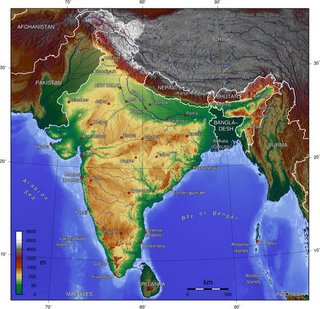
Here is a news clip today from India:
By Nayanima Basu, Indo-Asian News Service
New Delhi, April 15 (IANS)
The Indian news industry needs to innovate constantly in order to survive global competition and cater to the changing needs of readers and viewers, says David Nordfors, a senior research scholar at Stanford University's Centre for Innovations in Learning.
Nordfors, who was in India to hold extensive seminars and discussions on 'Innovation Journalism', coined the concept in 2003. He is an adviser to the governments of US, Europe and Asia on the role of journalism in the economy and its application in public innovation policy.
"The Indian news industry needs to embrace innovation right now as it has the resources to take the lead in developing new markets and can be an authoritative source of knowledge for the whole world," Nordfors told IANS in an interview during his visit.
"If the Indian news industry chooses to lean back and not become innovative, it will fall behind, and others will tell the story of India to the rest of the world. The choice is with India and I believe it can be more competitive at innovation than China, who are going for innovation too," said Nordfors, who is also a writer and columnist with a leading Swedish IT magazine.
According to him, the Indian media, which grew at 20 percent in 2006, is held in high esteem in the world for its content and analytical ability. But in order to sustain the credibility the industry has to shift its focus from quintessential reporting to something new so as to take a lead in the developing markets.
"Don't lean back and focus only on traditional news on paper. This will work fine for some years, but it is a fool's paradise," Nordfors said.
He also said India should learn from the failure of the media industry in Western countries which did not shift its focus from the traditional mode of newspaper reporting and hence reached a point of saturation.
"Everywhere in the Western world, the news industry is being hammered because they hung on to paper for too long. Now they can hardly afford to develop the products they need for securing their future because they are too busy surviving," he averred.
Adding that the Indian news industry should try and find newer ways to innovate, Nordfors said: "The Indian news media should look into ways of publishing news to cell phones, personal computers for ordinary people. This way you (Indian media) can reach incredibly large markets, also outside India."
Nordfors, who as a journalist initiated and headed the first symposium on the Internet that was held by Swedish Parliament, said: "The newsrooms need to be reorganised, and the newsbeat structures need to be looked over. Develop expertise in reporting on innovation. It is the big thing in all industries today.
"It is not about business or tech or politics, it is about business and tech and politics. The journalist needs to combine technology, business and politics in order to get the bigger picture."
Indo-Asian News Service




